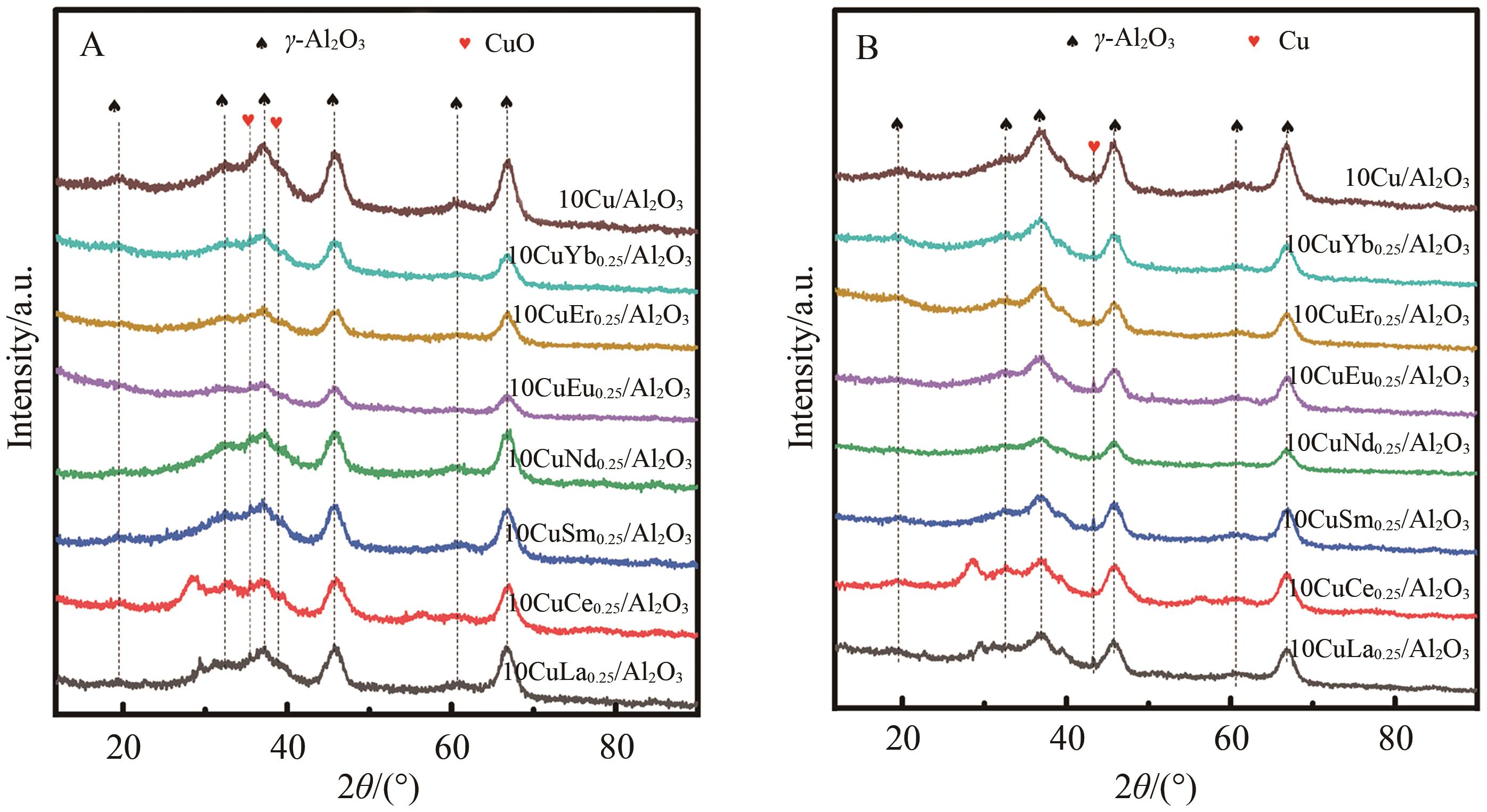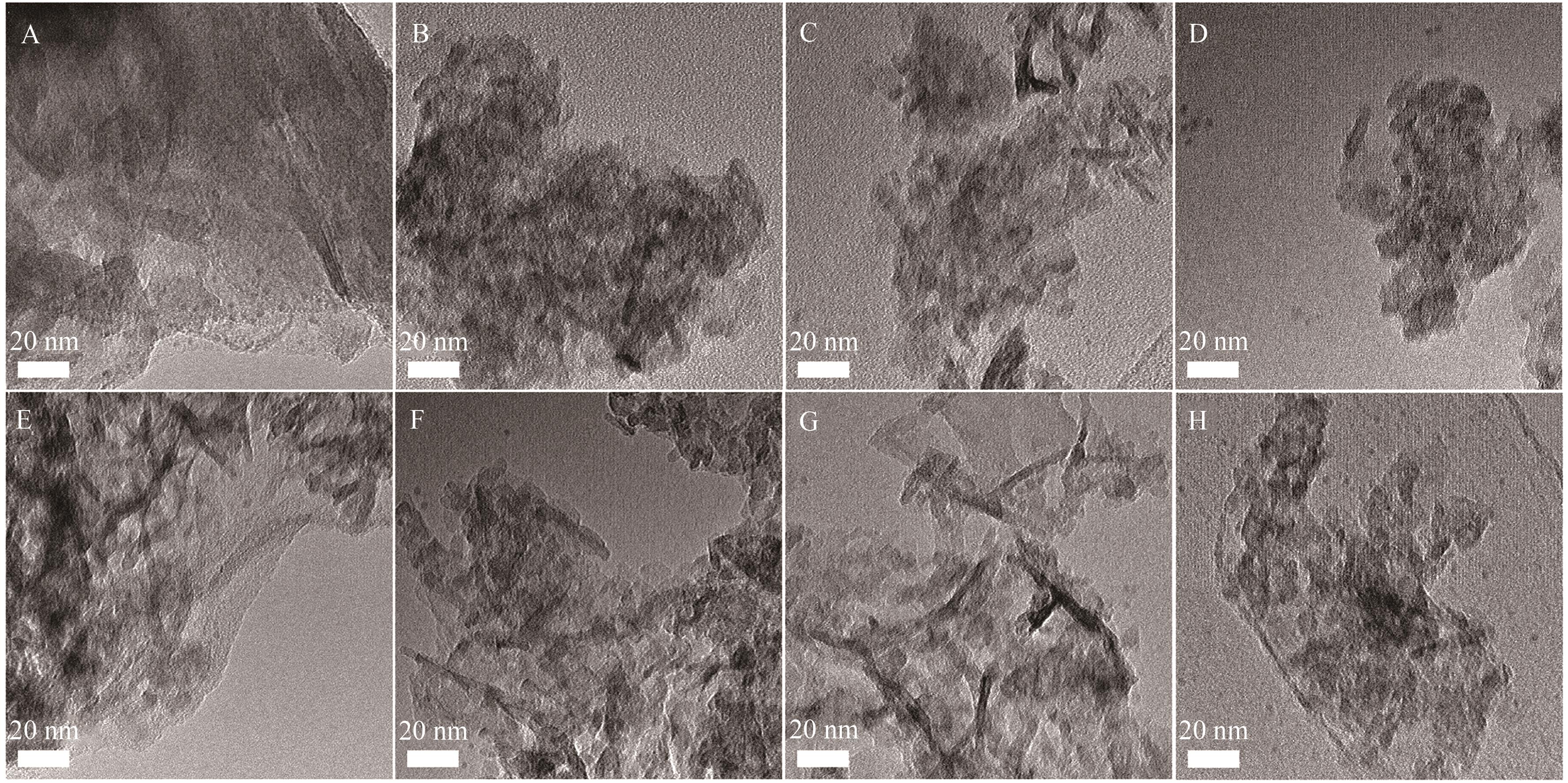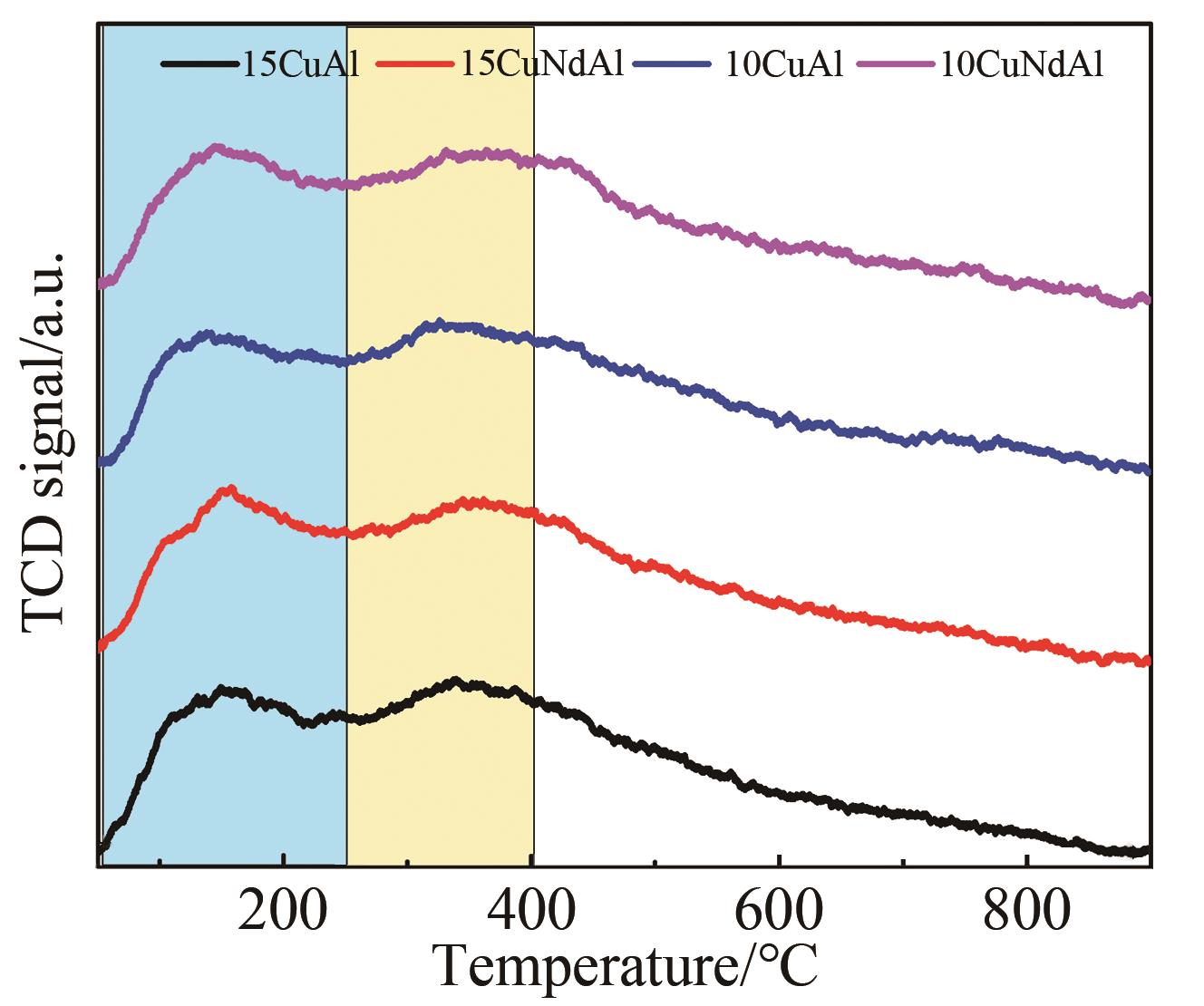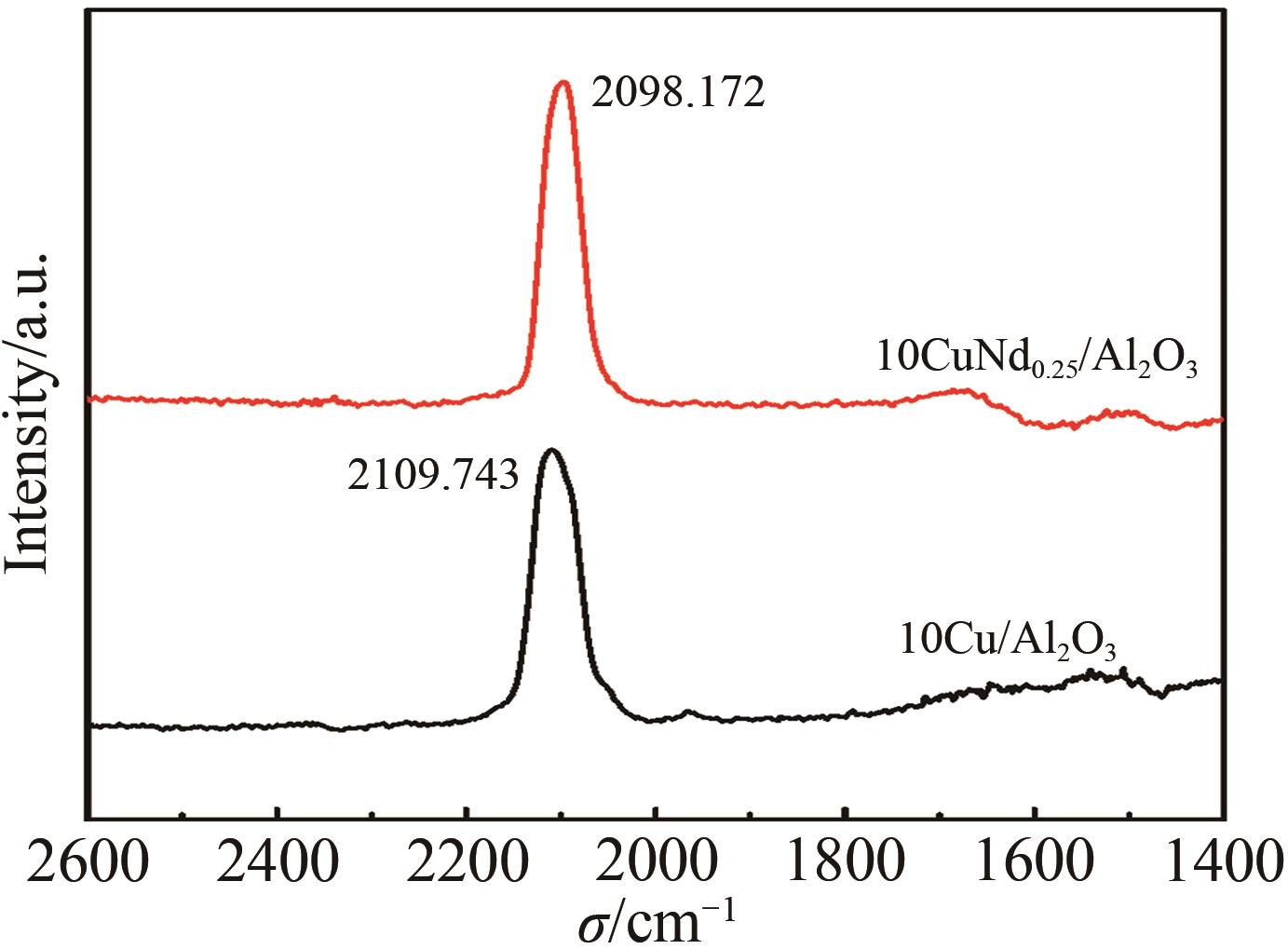
Chinese Journal of Applied Chemistry ›› 2024, Vol. 41 ›› Issue (3): 340-348.DOI: 10.19894/j.issn.1000-0518.230280
• Rare Earth • Previous Articles Next Articles
Effect of Rare Earth Modification on the Catalytic Performances of Cu/Al2O3-Based Catalysts for Hydrogenolysis of Ethyl Levulinate
Zong-Ling SHANG1,2,3, Chao ZHANG3, Feng-Yu ZHAO1,2,3( )
)
- 1.State Key Laboratory of Electroanalytical Chemistry,Changchun Institute of Applied Chemistry,Chinese Academy of Sciences,Changchun 130022,China
2.School of Applied Chemistry and Engineering,University of Science and Technology of China,Hefei 230026,China
3.Jilin Province Key Laboratory of Green Chemistry and Process,Changchun Institute of Applied Chemistry,Chinese Academy of Sciences,Changchun 130022,China
-
Received:2023-09-14Accepted:2023-12-29Published:2024-03-01Online:2024-04-09 -
Contact:Feng-Yu ZHAO -
About author:zhaofy@ciac.ac.cn
-
Supported by:the National Natural Science Foundation of China(22072142)
CLC Number:
Cite this article
Zong-Ling SHANG, Chao ZHANG, Feng-Yu ZHAO. Effect of Rare Earth Modification on the Catalytic Performances of Cu/Al2O3-Based Catalysts for Hydrogenolysis of Ethyl Levulinate[J]. Chinese Journal of Applied Chemistry, 2024, 41(3): 340-348.
share this article
Add to citation manager EndNote|Ris|BibTeX
URL: http://yyhx.ciac.jl.cn/EN/10.19894/j.issn.1000-0518.230280
| Catalyst | Conversion/% | Selectivity/% | ||
|---|---|---|---|---|
| GVL | 1,4-PDO | 2-MTHF | ||
| Cu/Al2O3 | 100 | 12.1 | 50.8 | 37.1 |
| CuLa0.25/Al2O3 | 100 | 4.7 | 91.4 | 3.9 |
| CuCe0.25/Al2O3 | 100 | 6.8 | 82.5 | 10.8 |
| CuNd0.25/Al2O3 | 100 | 4.3 | 92.7 | 3.0 |
| CuSm0.25/Al2O3 | 100 | 4.8 | 89.1 | 6.1 |
| CuEu0.25/Al2O3 | 100 | 5.5 | 90.3 | 4.2 |
| CuEr0.25/Al2O3 | 100 | 4.5 | 84.1 | 11.4 |
| CuYb0.25/Al2O3 | 100 | 5.0 | 84.4 | 10.6 |
Table 1 Catalytic performance of Cu/Al2O3 and CuRe0.25/Al2O3 catalysts
| Catalyst | Conversion/% | Selectivity/% | ||
|---|---|---|---|---|
| GVL | 1,4-PDO | 2-MTHF | ||
| Cu/Al2O3 | 100 | 12.1 | 50.8 | 37.1 |
| CuLa0.25/Al2O3 | 100 | 4.7 | 91.4 | 3.9 |
| CuCe0.25/Al2O3 | 100 | 6.8 | 82.5 | 10.8 |
| CuNd0.25/Al2O3 | 100 | 4.3 | 92.7 | 3.0 |
| CuSm0.25/Al2O3 | 100 | 4.8 | 89.1 | 6.1 |
| CuEu0.25/Al2O3 | 100 | 5.5 | 90.3 | 4.2 |
| CuEr0.25/Al2O3 | 100 | 4.5 | 84.1 | 11.4 |
| CuYb0.25/Al2O3 | 100 | 5.0 | 84.4 | 10.6 |
| n(Nd)/n(Cu) | Conversion/% | Selectivity/% | ||
|---|---|---|---|---|
| GVL | 1,4-PDO | 2-MTHF | ||
| 0.05 | 100 | 18.1 | 72.5 | 9.4 |
| 0.15 | 100 | 9.0 | 87.6 | 3.3 |
| 0.25 | 100 | 9.1 | 88.9 | 2.0 |
| 0.35 | 100 | 15.7 | 83.4 | 0.9 |
Table 2 Influence of n(Nd)/n(Cu) on catalytic performances of 10CuNd x /Al2O3 catalysts
| n(Nd)/n(Cu) | Conversion/% | Selectivity/% | ||
|---|---|---|---|---|
| GVL | 1,4-PDO | 2-MTHF | ||
| 0.05 | 100 | 18.1 | 72.5 | 9.4 |
| 0.15 | 100 | 9.0 | 87.6 | 3.3 |
| 0.25 | 100 | 9.1 | 88.9 | 2.0 |
| 0.35 | 100 | 15.7 | 83.4 | 0.9 |
| Catalyst | Conversion/% | Selectivity/% | Activity/(mmol·h-1·g-1) | ||
|---|---|---|---|---|---|
| GVL | 1,4-PDO | 2-MTHF | |||
| 5Cu/Al2O3 | 99.1 | 32.2 | 39.1 | 28.7 | 25.1 |
| 5CuNd0.25/Al2O3 | 99.3 | 18.4 | 73.9 | 7.7 | 48.3 |
| 10Cu/Al2O3 | 100 | 12.5 | 60.7 | 26.8 | 17.5 |
| 10CuNd0.25/Al2O3 | 100 | 9.1 | 88.9 | 2.0 | 29.8 |
| 15Cu/Al2O3 | 99.1 | 8.2 | 69.2 | 22.6 | 16.1 |
| 15CuNd0.25/Al2O3 | 99.4 | 4.5 | 94.1 | 1.4 | 23.1 |
| 20Cu/Al2O3 | 41.4 | 100 | - | - | 0.0 |
| 20CuNd0.25/Al2O3 | 99.4 | 27.8 | 66.6 | 5.6 | 13.0 |
Table 3 Influence of Cu loading on catalytic performance at a Nd/Cu ratio of 0.25
| Catalyst | Conversion/% | Selectivity/% | Activity/(mmol·h-1·g-1) | ||
|---|---|---|---|---|---|
| GVL | 1,4-PDO | 2-MTHF | |||
| 5Cu/Al2O3 | 99.1 | 32.2 | 39.1 | 28.7 | 25.1 |
| 5CuNd0.25/Al2O3 | 99.3 | 18.4 | 73.9 | 7.7 | 48.3 |
| 10Cu/Al2O3 | 100 | 12.5 | 60.7 | 26.8 | 17.5 |
| 10CuNd0.25/Al2O3 | 100 | 9.1 | 88.9 | 2.0 | 29.8 |
| 15Cu/Al2O3 | 99.1 | 8.2 | 69.2 | 22.6 | 16.1 |
| 15CuNd0.25/Al2O3 | 99.4 | 4.5 | 94.1 | 1.4 | 23.1 |
| 20Cu/Al2O3 | 41.4 | 100 | - | - | 0.0 |
| 20CuNd0.25/Al2O3 | 99.4 | 27.8 | 66.6 | 5.6 | 13.0 |
| 1 | ZHAO Z L, YANG C, SUN P, et al. Synergistic catalysis for promoting ring-opening hydrogenation of biomass-derived cyclic oxygenates[J]. ACS Catal, 2023, 13: 5170-5193. |
| 2 | ZHAO Z L, GAO G, XI Y J, et al. Selective and stable upgrading of biomass-derived furans into plastic monomers by coupling homogeneous and heterogeneous catalysis[J]. Chem, 2022, 8: 1034-1049. |
| 3 | GAUTAM P, BARMAN S, ALI A. A comparative study on the performance of acid catalysts in the synthesis of levulinate ester using biomass-derived levulinic acid: a review[J]. Biofuels Bioprod Biorefining-Biofpr, 2022, 16: 1095-1115. |
| 4 | YAN L, YAO Q, FU Y. Conversion of levulinic acid and alkyl levulinates into biofuels and high-value chemicals[J]. Green Chem, 2017, 19: 5527-5547. |
| 5 | PILEIDIS F D, TITIRICI M M. Levulinic acid biorefineries: new challenges for efficient utilization of biomass[J]. ChemSusChem, 2016, 9: 562-582. |
| 6 | DEMOLIS A, ESSAYEM N, RATABOUL F. Synthesis and applications of alkyl levulinates[J]. ACS Sustainable Chem Eng, 2014, 2: 1338-1352. |
| 7 | BUCCIOL F, TABASSO S, GRILLO G, et al. Boosting levulinic acid hydrogenation to value-added 1,4-pentanediol using microwave-assisted gold catalysis[J]. J Catal, 2019, 380: 267-277. |
| 8 | LI M, LI G, LI N, et al. Aqueous phase hydrogenation of levulinic acid to 1,4-pentanediol[J]. Chem Commun, 2014, 50: 1414-1416. |
| 9 | MIZUGAKI T, NAGATSU Y, TOGO K, et al. Selective hydrogenation of levulinic acid to 1,4-pentanediol in water using a hydroxyapatite-supported Pt-Mo bimetallic catalyst[J]. Green Chem, 2015, 17: 5136-5139. |
| 10 | ORTIZ-CERVANTES C, GARCIA J J. Hydrogenation of levulinic acid to gamma-valerolactone using ruthenium nanoparticles[J]. Inorg Chim Acta, 2013, 397: 124-128. |
| 11 | CUI J L, TAN J J, ZHU Y L, et al. Aqueous hydrogenation of levulinic acid to 1,4-pentanediol over Mo-modified Ru/activated carbon catalyst[J]. ChemSusChem, 2018, 11: 1316-1320. |
| 12 | WANG H, WANG Y, HUANG L, et al. Continuous production of 1,4-pentanediol from ethyl levulinate and industrialized furfuryl alcohol over Cu-based catalysts[J]. Sustainable Energy Fuels, 2022, 6: 2449-2461. |
| 13 | SHAO Y, BA S, SUN K, et al. Selective production of gamma-valerolactone or 1,4-pentanediol from levulinic acid/esters over Co-based catalyst: importance of the synergy of hydrogenation sites and acidic sites[J]. Chem Eng J, 2022, 429: 132433. |
| 14 | FAN M, SHAO Y, SUN K, et al. Switching production of γ-valerolactone and 1,4-pentanediol from ethyl levulinate via tailoring alkaline sites of CuMg catalyst and hydrogen solubility in reaction medium[J]. Mol Catal, 2021, 510: 111680. |
| 15 | MA M, YAN X, HOU P, et al. One-pot transfer hydrogenation of methyl levulinate into valerolactone and 1,4-pentanediol over in situ reduced Cu/ZrOCO3 in 2-PrOH[J]. Chem Select, 2020, 5: 924-930. |
| 16 | SHAO Y, SUN K, LI Q, et al. Copper-based catalysts with tunable acidic and basic sites for the selective conversion of levulinic acid/ester to γ-valerolactone or 1,4-pentanediol[J]. Green Chem, 2019, 21: 4499-4511. |
| 17 | DENG T, YAN L, LI X, et al. Continuous hydrogenation of ethyl levulinate to 1,4-pentanediol over 2.8Cu-3.5Fe/SBA-15 catalyst at low loading: the effect of Fe doping[J]. ChemSusChem, 2019, 12: 3837-3848. |
| 18 | YANG Y, XU X, ZOU W, et al. Transfer hydrogenation of methyl levulinate into gamma-valerolactone, 1,4-pentanediol, and 1-pentanol over Cu-ZrO2 catalyst under solvothermal conditions[J]. Catal Commun, 2016, 76: 50-53. |
| 19 | REN D, WAN X, JIN F, et al. Selective hydrogenation of levulinate esters to 1,4-pentanediol using a ternary skeletal CuAlZn catalyst[J]. Green Chem, 2016, 18: 5999-6003. |
| 20 | WU J, GAO G, SUN P, et al. Synergetic catalysis of bimetallic CuCo nanocomposites for selective hydrogenation of bioderived esters[J]. ACS Catal, 2017, 7: 7890-7901. |
| [1] | Xin XU, Ye LI, Min WANG, Zhang-Cheng FU, Guo-Min QI, Chun-Hua LU. Self‑Assembled MicroRNA‑21 Responsive Zn2+/DNA Nanoparticles for Tumor Fluorescence Imaging and Oxidative Stress Therapy [J]. Chinese Journal of Applied Chemistry, 2024, 41(1): 164-174. |
| [2] | Jun-Jie SHI, Zhe-Hang SHI, Hong-Zhou LI. Preparation of Magnesium Aluminum-Type Hydrotalcite Compounds Intercalated with Phosphorus Flame Retardants and Their Flame Retardant Application in Thermoplastic Polyurethane [J]. Chinese Journal of Applied Chemistry, 2023, 40(9): 1288-1301. |
| [3] | Peng BU, Hong-Liang LI. Preparation and Upconversion Luminescence Study of Rare Earth Yb3+/Tm3+ Doped NaGd(MO4)2 Phosphors [J]. Chinese Journal of Applied Chemistry, 2023, 40(3): 374-379. |
| [4] | Shu-Min CHEN, Zi-Quan LYU, Xuan ZOU, Shui-Qing GUI, Xue-Mei LU. Research Progress of Functional Masks Amid the Normalization of the COVID-19 Pandemic [J]. Chinese Journal of Applied Chemistry, 2023, 40(11): 1504-1517. |
| [5] | Mou-Cui LI, Yang-Ming DONG, Ying-Hui REN, Hai-Xia MA, Le QI. Synthesis, Antifungal Activity and Molecular Docking Study of 1,2,4-Triazole Bis-Schiff Base Derivatives [J]. Chinese Journal of Applied Chemistry, 2023, 40(1): 116-125. |
| [6] | Yan-Qin CHENG, Zhuo-Xi LI, You-Di WANG, Juan-Juan XU, Zheng BIAN. Structurally Simplified 4-Hydroxyprolinamide for Highly Efficient Asymmetric Michael Addition of Aldehydes to Nitroolefins [J]. Chinese Journal of Applied Chemistry, 2023, 40(1): 146-154. |
| [7] | Xue-Xian YANG, Jian ZHANG, Zhi-Gang GU. Surface‑Coordinated Metal‑Organic Framework Thin Film HKUST‑1 for Optoelectronic Applications [J]. Chinese Journal of Applied Chemistry, 2022, 39(7): 1013-1025. |
| [8] | Jing-Hui WEN, Bing ZHAO, Wei KAN, Li-Yan WANG, Li SUN, Tian-Shu SONG, Bo SONG. Synthesis of Isomers of Distinguishable Iron(Ⅲ) Fluorescent Probes and Application in Water Samples [J]. Chinese Journal of Applied Chemistry, 2022, 39(5): 787-796. |
| [9] | Jian-Shuang ZHANG, Mei-Zhen GAO, Meng-Yao WANG, Qi SHI, Jin-Xiang DONG. Zeolitic Imidazolate Framework ZIF‑71 for Adsorption and Separation of 2,3‑Butanediol/1,3‑Propanediol From Dilute Aqueous Solutions [J]. Chinese Journal of Applied Chemistry, 2022, 39(11): 1735-1745. |
| [10] | Jiu-Geng CHENG, Zhao-Hui SU. Quantitative Analysis of Phase Composition of Poly (1-butene) /Polypropylene Blends by Atomic Force Microscopy-Infrared [J]. Chinese Journal of Applied Chemistry, 2022, 39(02): 266-271. |
| [11] | Yu-Fei YAN, Ji CHEN, Kai LI, Dan ZOU, De-Qian LI. Extraction of Cerium (Ⅳ) by Primary Amine N1923 from Sulfuric Acid Medium Containing Fluorine [J]. Chinese Journal of Applied Chemistry, 2022, 39(02): 307-314. |
| [12] | Yu-Hang ZHAO, Chao-Qun HAN, Jin LIU, Xing XIA, Yi-Hao WANG, Jian-Jun YANG. Investigation on the Spectral Variation of Typical Organic Phosphorus Compounds under Different pH Conditions Using Solution31P NMR Spectroscopy [J]. Chinese Journal of Applied Chemistry, 2022, 39(02): 315-321. |
| [13] | ZHANG Bao-Hua, SHI Lan-Xiang, GUO Rui-Xia. Synthesis and Oxidation Activity of Adamantane Supported Hypervalent Iodine Reagent [J]. Chinese Journal of Applied Chemistry, 2021, 38(6): 0-0. |
| [14] | ZHANG Bao-Hua, SHI Lan-Xiang, GUO Rui-Xia. Synthesis and Oxidation Activity of Adamantane Supported Hypervalent Iodine Reagent [J]. Chinese Journal of Applied Chemistry, 2021, 38(6): 651-657. |
| [15] | CAI Man-Ying, LIAO Yu-Hui, XU Wei, ZHOU Dong-Fang. Research Progress on Biosafety Materials for the Prevention and Control of the Coronavirus Disease 2019 [J]. Chinese Journal of Applied Chemistry, 2021, 38(5): 498-509. |
| Viewed | ||||||
|
Full text |
|
|||||
|
Abstract |
|
|||||








